Selfishly
Saturday, 20 December 2025
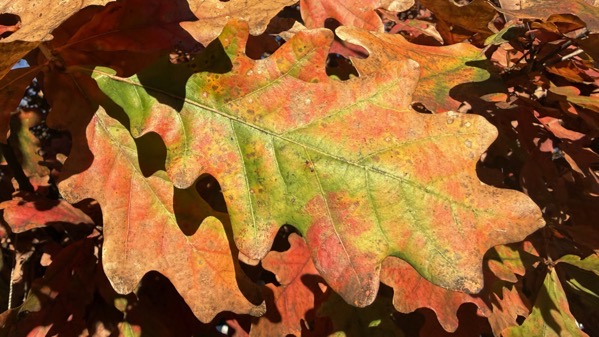
We’ve had lows below freezing recently, and we’re headed for highs in the 70s. Aside from the implications regarding climate change [huuuuge], I’m looking forward to it.
Saturday, 20 December 2025

We’ve had lows below freezing recently, and we’re headed for highs in the 70s. Aside from the implications regarding climate change [huuuuge], I’m looking forward to it.
Thursday, 18 December 2025
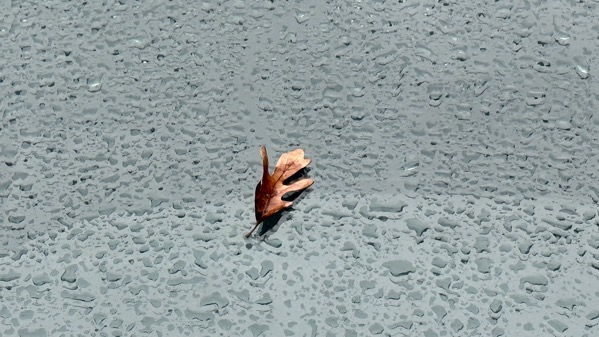
I was lucky today. We had rain off and on. Without planning, every time I went outside it wasn’t raining.
Monday, 15 December 2025
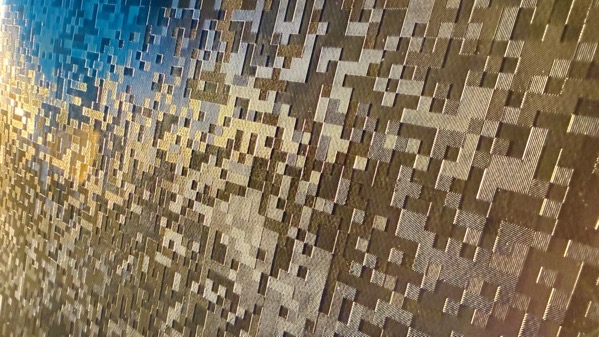
The promised cold rolled in, yet it wasn’t staggeringly chilly during the daylight hours as the sun did a good job of radiating heat. During darkness, well, that’s a different story.
Sunday, 14 December 2025
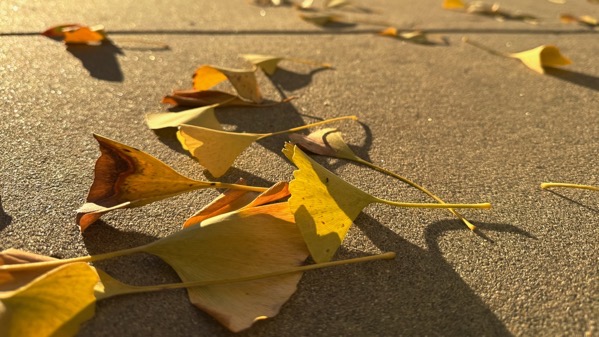
This was our day…wind blowing leaves around and dusting the sidewalks with acorns, too.
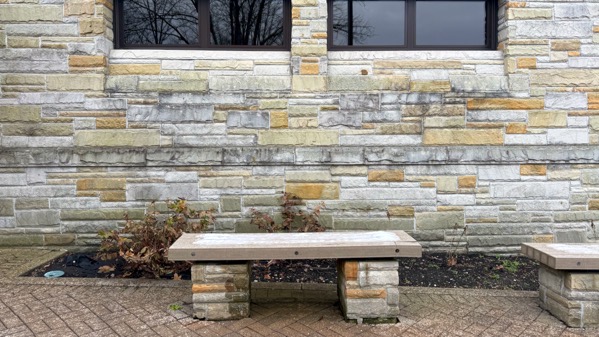
Here’s an iced stone bench at the Canyon Rim Visitor Center at the New River Gorge last week. It is representing (suggesting? hinting at?) the cold predicted for us for the next few days. A low of 21°F is expected tomorrow morning, even colder with the wind chill. That’s brr, but brrrrrrrrrrr for ATL.
Thursday, 11 December 2025
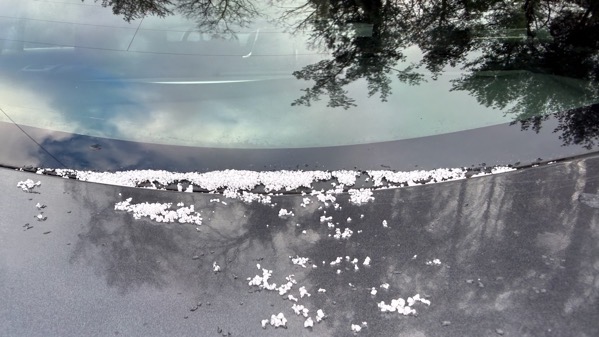
Snow granules. Indeed, we found snow in Asheville, not enough to be visible anywhere but odd spots like cracks on our car’s body.
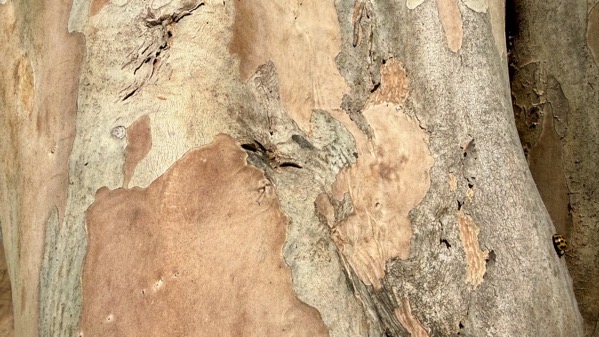
We fitted in one more loved-ones stop in SC, and zoomed home, negotiating one last Atlanta traffic slow-down en route.
So glad we went. Turns out that we managed to find the best weather window that there was, although we didn’t know it at the time.
Wednesday, 10 December 2025
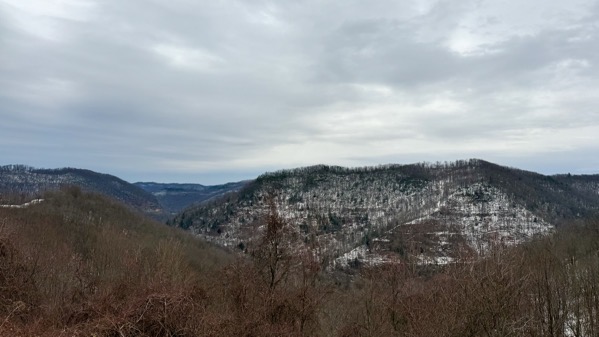
I find it always special when I’m rolling along a mountain road and find a pull-off vista-view. Here’s one…
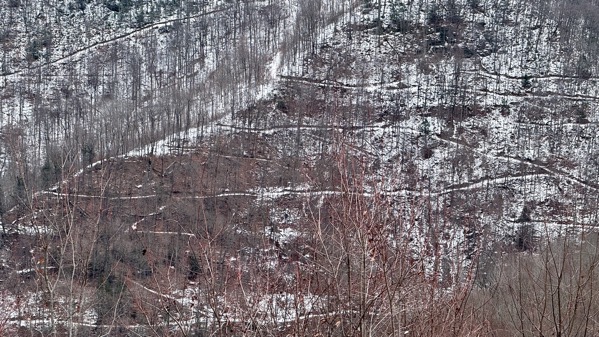
…with snow outlining every little trail and logging road. This is a close-up of that “triangle” on the right side above.
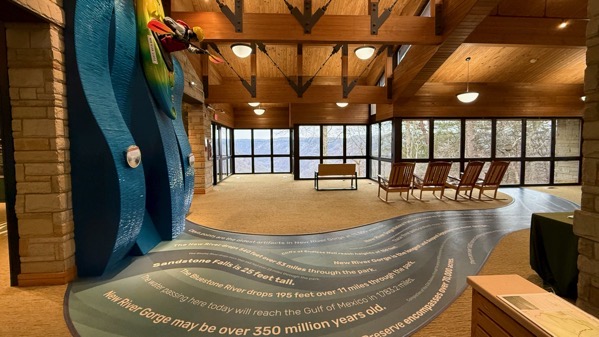
Our tourist stop of the day was at (one part of) New River Gorge National Park and Preserve, in West Virginia. We first saw the gorge from these windows in the Canyon Rim Visitor Center.

Truly a gorgeous gorge—even with rain starting to fall.

Here’s the high bridge crossing the gorge…
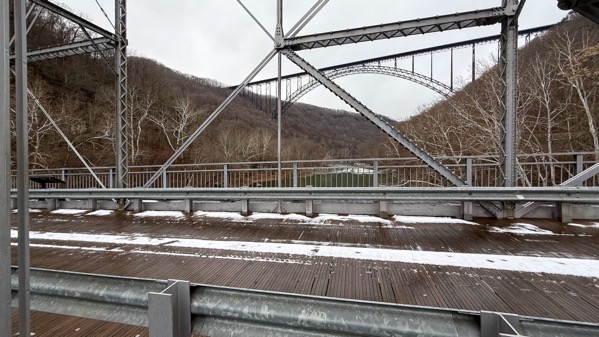
…and here’s the high bridge from the low bridge, which is the one we crossed.
The rest of the day was rain, never a blinding storm, but constant, mile after mile. We hear that we may awaken to snow tomorrow here in Asheville, despite being so much farther south than the southern Lake Erie shore.
Tuesday, 9 December 2025
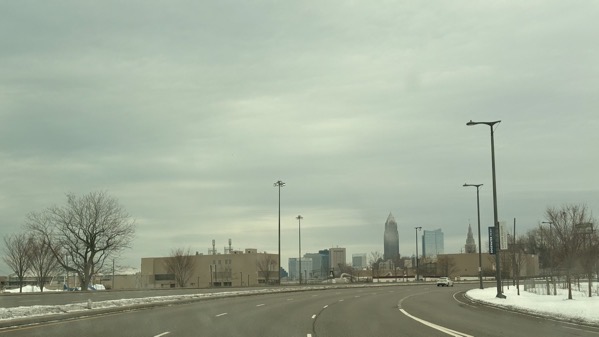
We motored east sometimes close to Lake Erie, sometimes a few miles inland, and finally saw Cleveland in the distance.
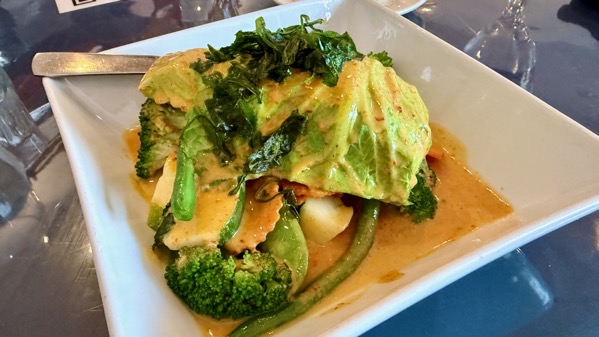
Over on the east side, we met up with a college buddy of The Guru at a lovely Thai restaurant. My dish: Siam salmon…salmon wrapped in a napa cabbage leaf with veg and a rich yellow curry sauce. Oh, just yum. Perfect. Thanks, FK.

We continued east, still under the lake effect smear, and, while in Amish territory dodging horse-drawn buggies, spotted this pair of planes that looked to me as if they were slowly degrading. I did not see a for-sale sign.
Then we turned south, and outran the snow-smear, and are now on the PA side of the OH/PA line, enjoying temps just a smidge above freezing. We understand that a winter storm is headed this way tomorrow. Hopefully, we’ll be out of here before it ramps up.
Sunday, 7 December 2025

It started snowing sometime when it was still dark, big lazy flakes, and kept it up almost until noon. In the background, you can tell our host was busy with the snowblower, cleaning sidewalks and driveway. And a parking spot by the curb for us. Thoughtful man.
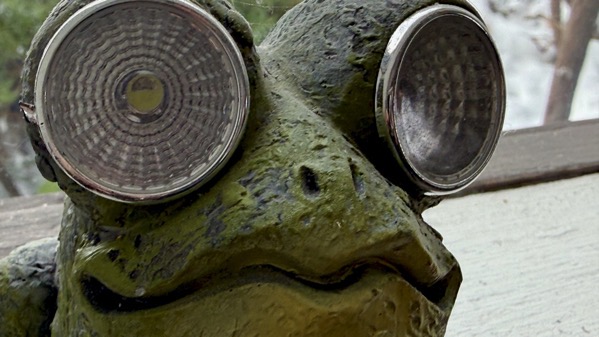
It was NOT froggy weather.
Thursday, 4 December 2025
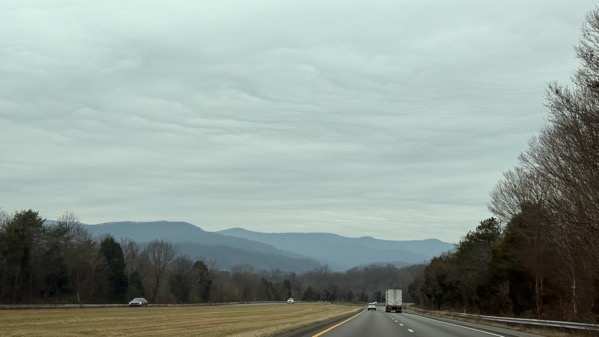
Sometimes the wild blue yonder is really shades of blue, or perhaps grey-blue if you’re picky.
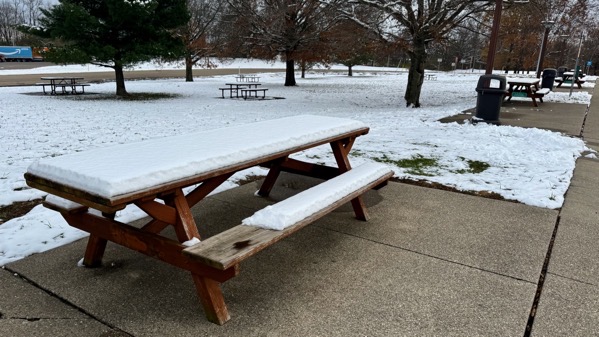
We’re northbound, after a snow-storm, which is a better time than during the storm. Duh. This is a northern Kentucky rest area.
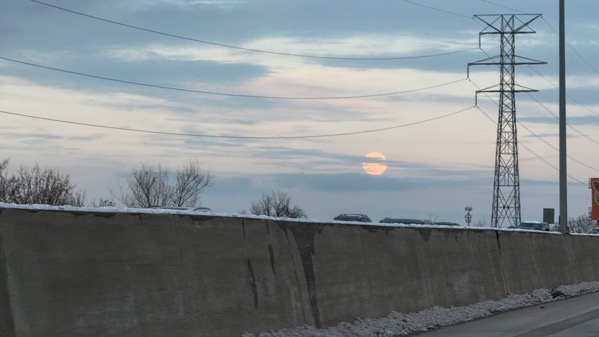
Full moon rising over Cincinnati.
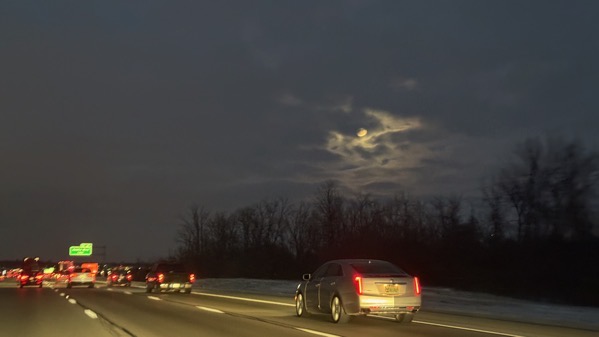
And, by the time we got to the outer Cincinnati suburbs: demurely hiding moon. If anthropomorphizing is permitted.
We did see about five minutes of wan sunshine, and a few minutes of snow blowing across the pavement, but otherwise: dry roads, yay.
Sunday, 30 November 2025
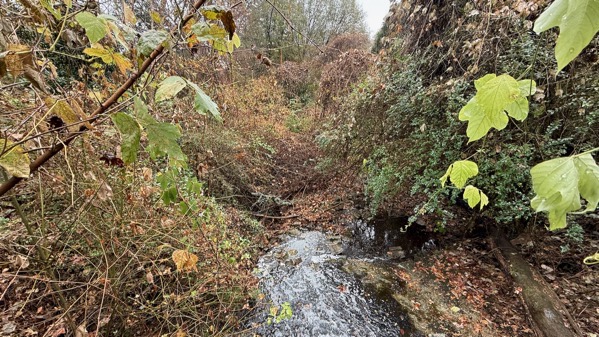
The rain we got and the rain that’s predicted surely will knock back our drought situation.